My wife Jennifer was jogging along a local Idaho greenbelt path when she saw another jogger heading towards her. That would not be notable, except this jogger had feathers. And claws. She was sharing the trail with an emu.
The emu did not exhibit good trail etiquette, running on the wrong side and refusing to yield. Jennifer finally leapt into a ditch, and the emu continued on its way, seemingly oblivious to her presence. This emu was most likely an escape from a nearby farm that keeps exotic animals. In many cases, though, the appearance of exotic birds is a mystery.
We imagine a clear line delineating the domestic and the wild. The reality is a bit messier. Roaming the wild are feral poultry, aviary escapees and released pets. Some are ill adapted to life in the wilds and succumb quickly. Others establish small, localized populations. And some become full-blown invasive species.
Avid birders enjoy arguing about such birds and what should “count” for a life list. I’ll leave those arguments to the hard-core listers.
Whatever your opinion, one thing is certain: If you spend a lot of time observing nature, you’re going to encounter domestic birds now living wild.
Here’s a guide to some of the common farm, pet and aviary birds you might encounter. Because flocks of these feral birds come and go, and new birds escape all the time, the list is not exhaustive. Let me know what weird domestic and exotic birds you’ve seen in the comments.
-
Chickens
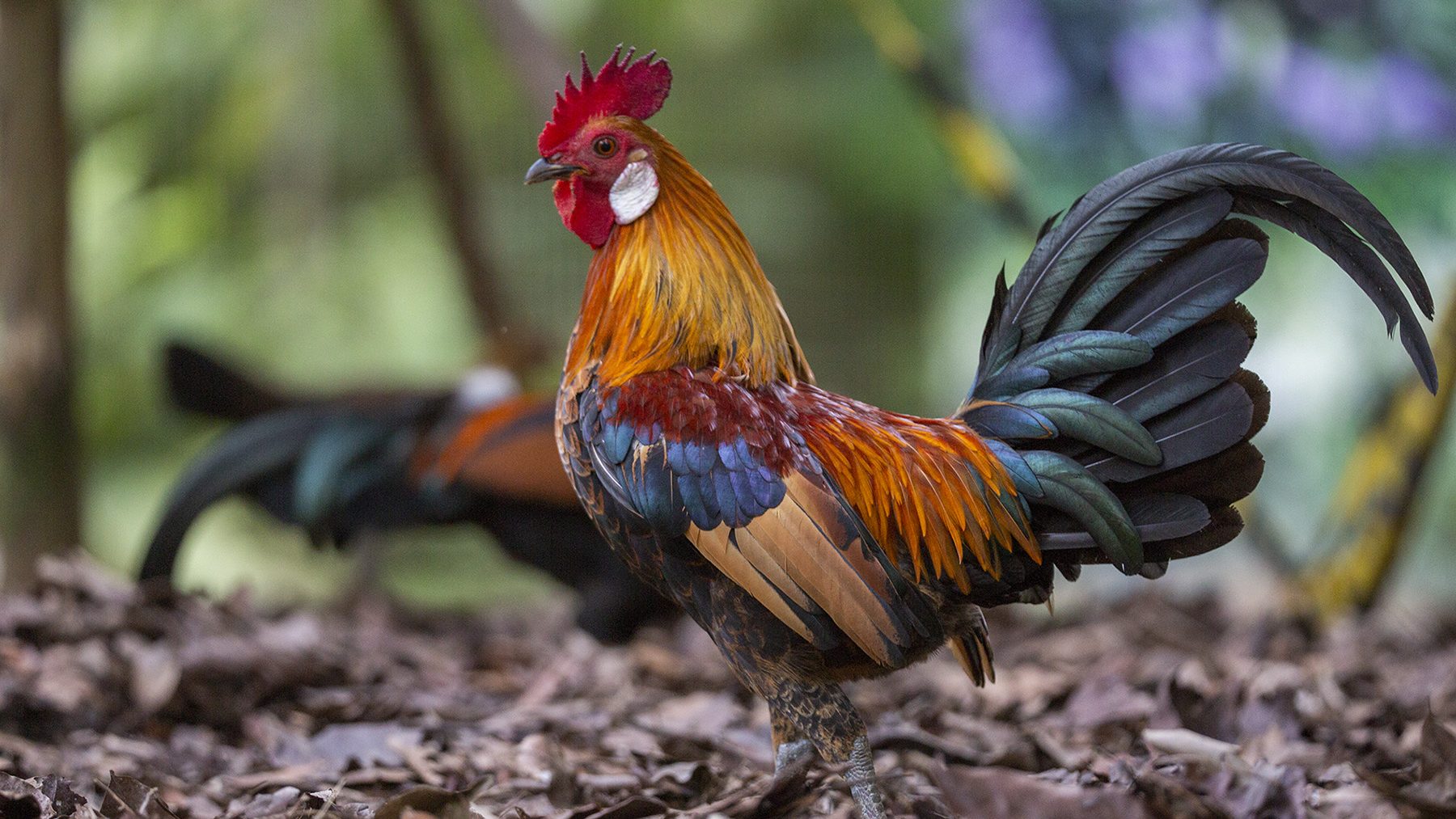
A red junglefowl in the Singapore Botanic Gardens. © budak / Flickr Red junglefowl, the wild ancestor of the domestic chicken, struts and scratches in the forests of India and southeast Asia. And their existence is threatened by hybridization with…domestic chickens. The ubiquity of free-ranging domestic chickens makes it hard to find red junglefowl that don’t show signs of hybridization.
Curiously, one of the few remaining populations of pure red junglefowl, as reported in Audubon, is found in Georgia. About 900 junglefowl roam the streets of the town of Fitzgerald. Many believed these were feral barnyard escapees, but that’s not the case. In the 1960s, wildlife managers released the junglefowl as part of an effort to establish populations of non-native gamebirds for hunting purposes.
The junglefowl never established in wild habitats, but they did colonize the Fitzgerald’s parks and backyards, where many local residents consider them a nuisance.
Free-range chickens go feral or semi-feral in many parts of the world. In Key West, the birds – perhaps descendants of cockfighting birds that were released when the activity became illegal – behave much like junglefowl.
Feral chickens are ubiquitous on both Caribbean and Hawaiian islands. The Bermuda government has attempted total eradication, with fines for allowing any chicken to roam free. But many islands have recognized that chicken control is at best a holding action, and the birds have become much like city pigeons – accepted if not beloved.
-
Turkeys
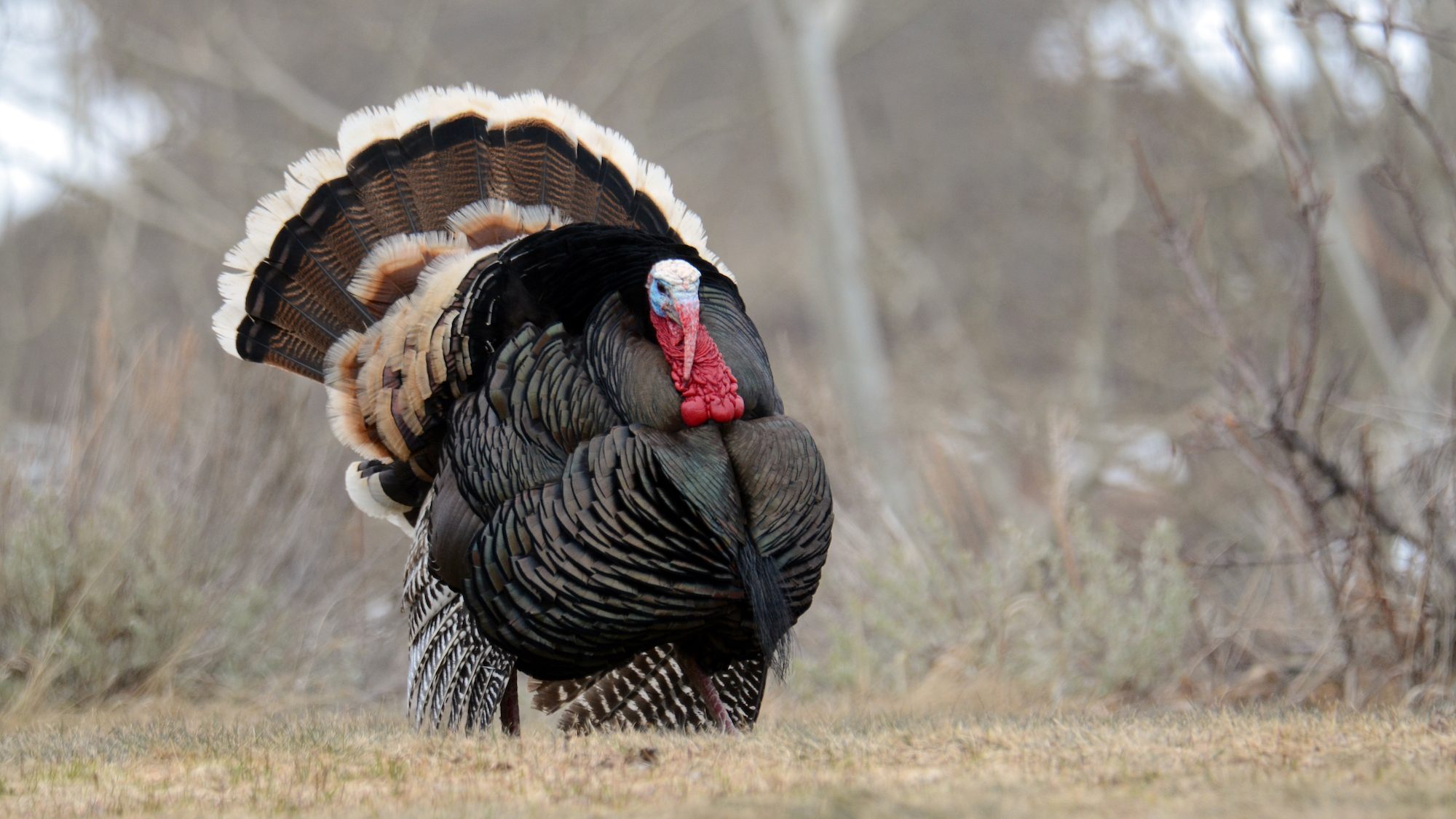
A wild turkey. Photo © Lisa Ballard Wild turkeys thrive across North America, so you might imagine that domestic turkeys would easily mix with their wild ancestors. That’s not the case. As ornithologist Joe Smith notes, “Free food takes the ‘wild’ out of turkey pretty quickly.”
Even wild turkeys raised in hatcheries fare poorly in the wild. When these birds were released, they were unable to cope with predators, hunters and cold weather. Wild turkey restoration and reintroduction efforts failed until state agencies began trapping and transferring wild turkeys.
As Smith reports, wild turkeys originated with a little-known subspecies of turkey found in Mexico and Central America. There are five better known subspecies of wild turkey, and their genetics have been mixed frequently during reintroduction programs. But despite all that mixing, there is no real evidence that domestic turkey genetics are part of the mix.
I have seen anecdotal suggestions that New Zealand’s non-native turkey population derives from domestic birds, but I have not found any published research on this.
-
Ducks and Geese
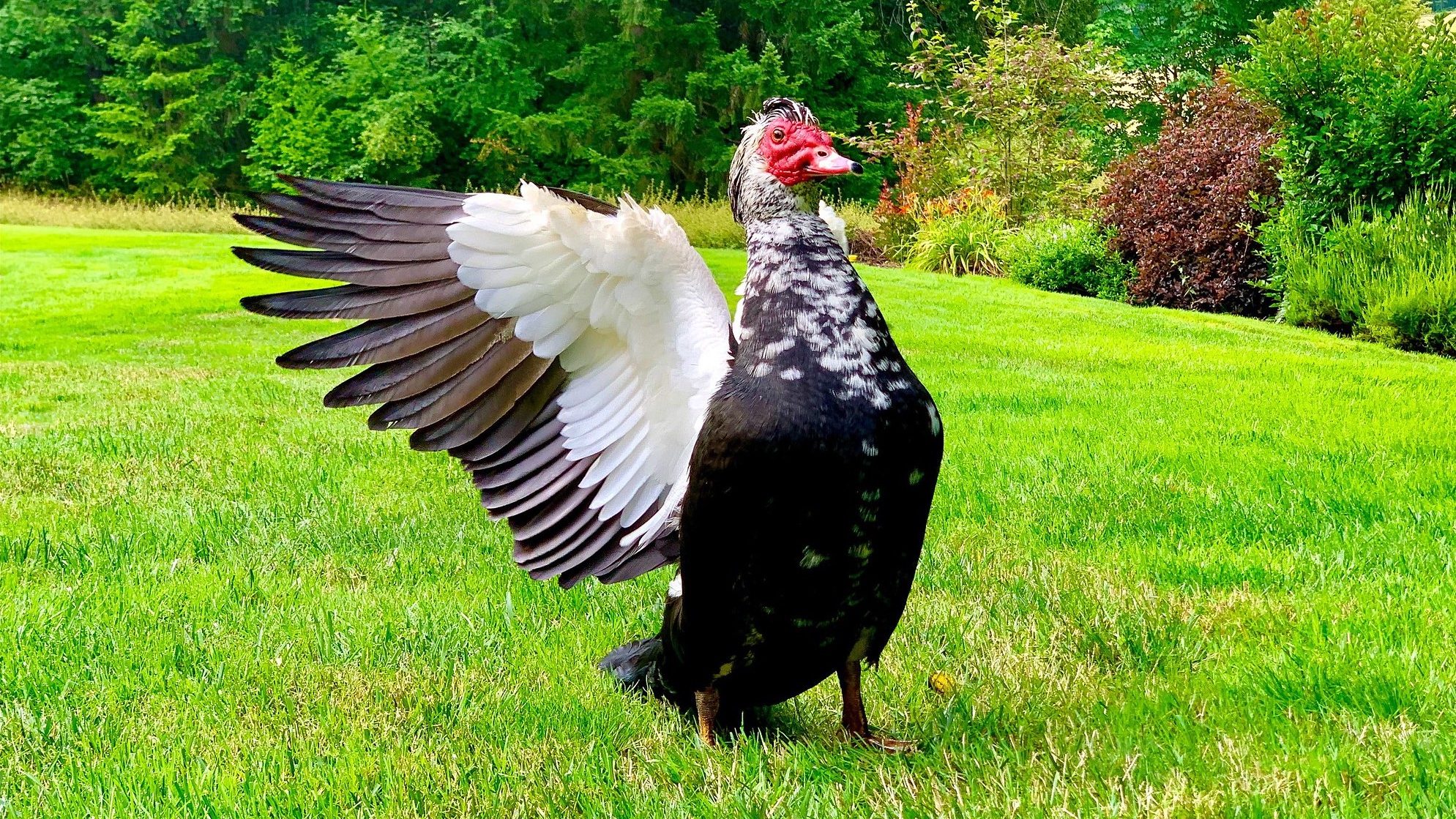
A muscovy duck. © Grace Courbis / Flickr When it comes to domestic waterfowl, things get really wild. Visit any city pond or nature park, and you’re likely to see ducks that don’t resemble anything in your field guide. That’s because domestic ducks have been mixing it up with wild birds. They hybridize. And aviary birds escape.
Many of the weirder ducks you see at the local pond are mallards. Mallards have been bred extensively and come in a variety of colors and sizes. Wild mallards are also abundant, so the domestic and wild birds breed. Some of the results resemble wild mallards; others, no so much.
Muscovy ducks, a domesticated North American bird, also can frequently found in city parks. Graylag geese and swan geese are domestic geese varieties that often live feral. But other species go wild, too. I’ve seen Egyptian geese thriving in Miami canals. Mandarin ducks often cause a stir, like when one showed up in Central Park.
My previous field guide to weird ducks may help you sort out if you’re seeing a domestic duck, a hybrid or aviary escape. I also recommend Princeton University Press’s Waterfowl of North America, Europe and Asia: An Identification Guide. It includes extensive illustrations of color variations and hybrids, an indispensable reference for waterfowl enthusiasts.
-
Swans

Mother swan feeding cygnets. © Daryl Ramrattan/TNC Photo Contest 2019 Mute swans deserve a special entry. These birds, kept for ornamental purposes in many parts of the world, go wild with some frequency. Some live out their days in a city park. Others breed and thrive, becoming destructive invasive species.
According to the Cornell Lab of Ornithology, mute swans now live wild in the Mid-Atlantic, the Great Lakes area and the Pacific Northwest of the United States. They are very aggressive and territorial, driving out nesting native birds. In the Chesapeake Bay, more than 4,000 mute swans gobble up sea grass, adding another threat to the Bay’s water quality.
Unlike many invasive species, swans are pretty and charismatic. This means that any control efforts are highly controversial. Mute swan populations grow, posing continuing threats to wetlands.
-
Guinea Fowl
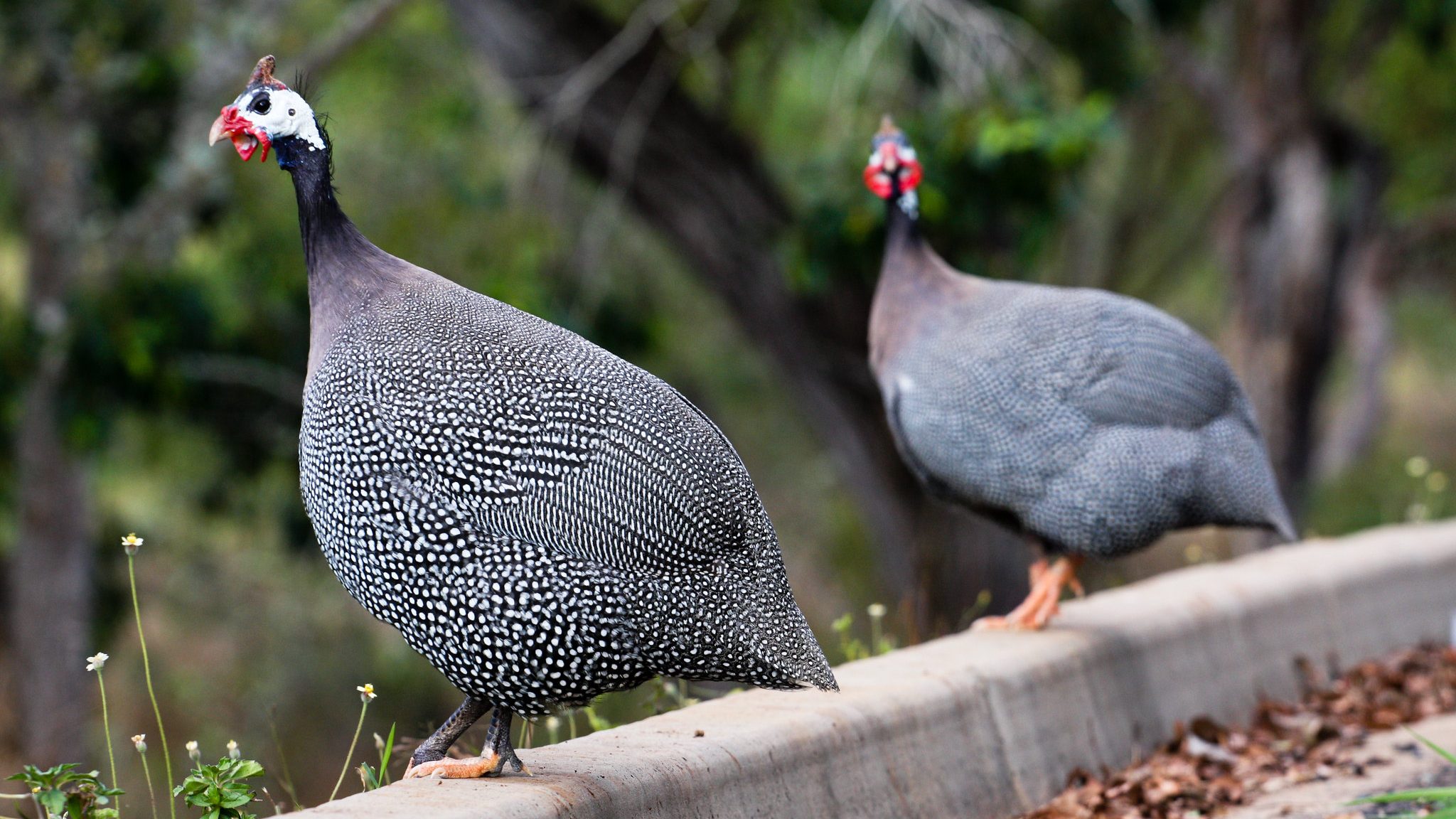
Feral guinea fowl in Australia. © Matthew Kenwrick / Flickr Even if I was hiking a mile from my grandparents’ home, I could still hear the raucous cries of their guinea fowl flock. I imagine it drove their neighbors crazy. The guinea fowl alarm call has all the charm of a bullhorn crossed with a jackhammer.
Native to Africa, the guinea fowl is kept by small farm poultry enthusiasts around the world. The Sibley Guide to Birds notes a possible feral population in southern Florida. But the reality of guinea fowl is that they are always semi-feral. They wander off the farm, roaming free, never fully wild but never fully tame either. There is a guinea fowl that frequently interrupts my zoom calls with colleague Justine Hausheer, who lives in Queensland, Australia. I suspect many “feral” guinea fowl are like this, free-roaming neighborhood birds that tend to annoy the neighbors.
-
Peafowl
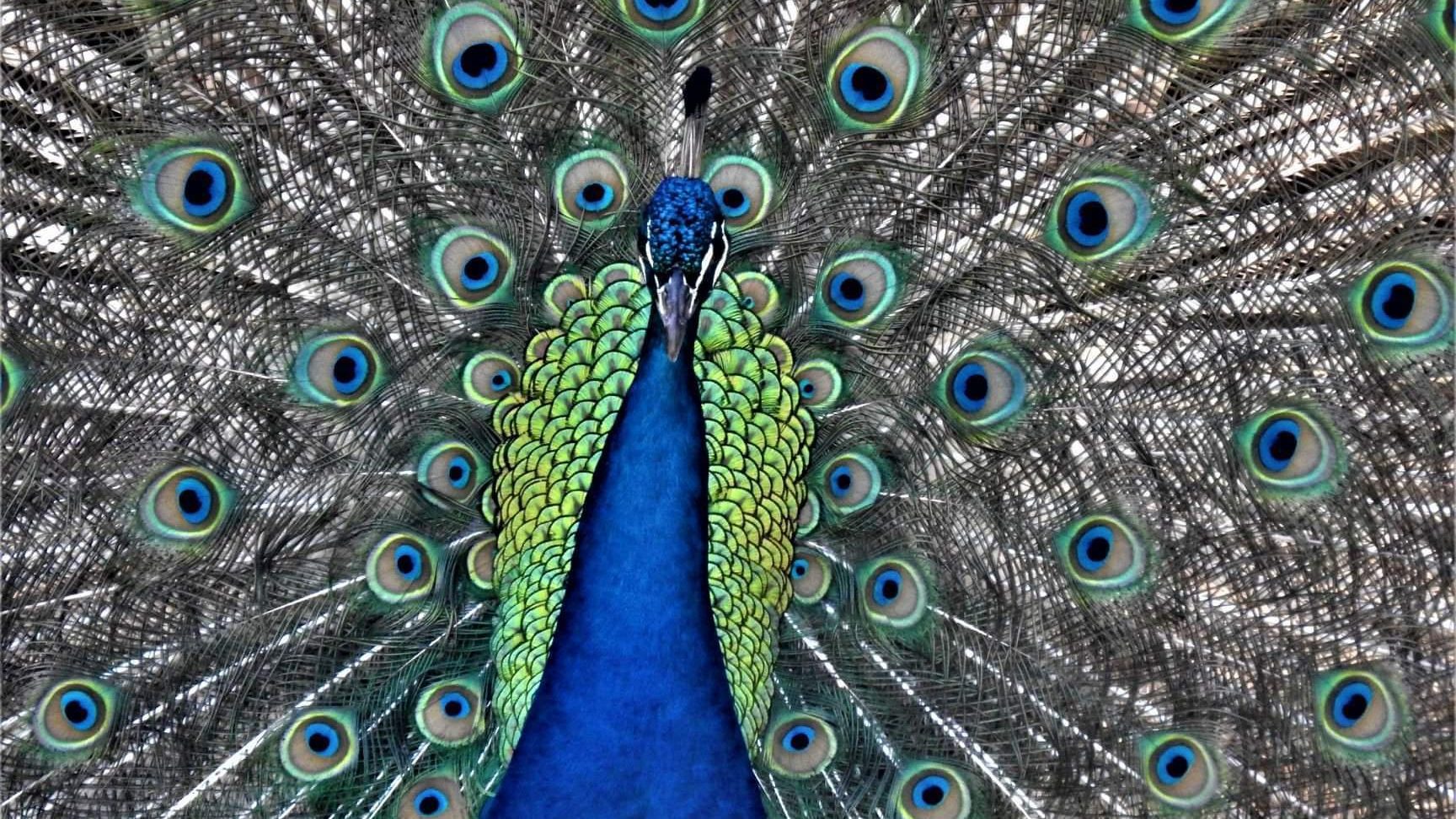
An adult. male peacock (or peafowl) in full display. © Corrine Camarillo /TNC Photo Contest 2019 I was enjoying an outdoor performance of A Midsummer Night’s Dream when a large peafowl confidently landed on stage. Despite the dramatic entrance, the peafowl was not part of the show. It was a free-roaming bird that had been crashing Shakespeare performances all summer.
Peafowl are gorgeous birds, and they’ve long been kept at parks, castles, zoos and botanical gardens. Like guinea fowl, they often roam the borderlands of wild and domestic. They frequently wander off the park grounds and take up residence in local neighborhoods. Despite the dramatic tail and splashy colors, peafowl usually wear out their welcome quickly, in no small part because they have a call that sounds like a child in severe distress.
Feral populations exist in a number of California communities. A population of more than 100 birds in British Columbia community causes thousands of dollars of damage when the birds attack their own reflections in parked cars. There are reported flocks in England, Australia and just about any place with large public gardens. But many of these small flocks seem to eventually disappear. In New Zealand, a feral population seems firmly established, and they are even hunted as a game bird.
-
Ornamental Pheasants

Ring-necked pheasant in Wisconsin. Photo credit: © Steve S. Meyer The ring-necked pheasant, native to Asia, is now a naturalized wild bird in agricultural and grassland areas of North America and Europe. These birds are also frequently released by state agencies and private clubs for hunting purposes. But most of the world’s pheasant species do not persist when introduced into new habitats.
But many pheasant species are popular in aviaries. Paul Johnsgard notes in The Pheasants of the World that 46 of the world’s 49 pheasant species are raised in captivity. It’s easy to see why: they are often large and colorful birds.
These birds do escape from aviaries, causing a stir when an exotic golden pheasant or Lady Amherst pheasant appears on iNaturalist. Most birders ignore such sightings as they don’t count for lists. I’m a pheasant fanatic, so I always try to track down these occurrences. I’m frequently disappointed. Ornamental aviary pheasants never survive long in a world of rain, foxes and feral cats.
-
Doves and Pigeons
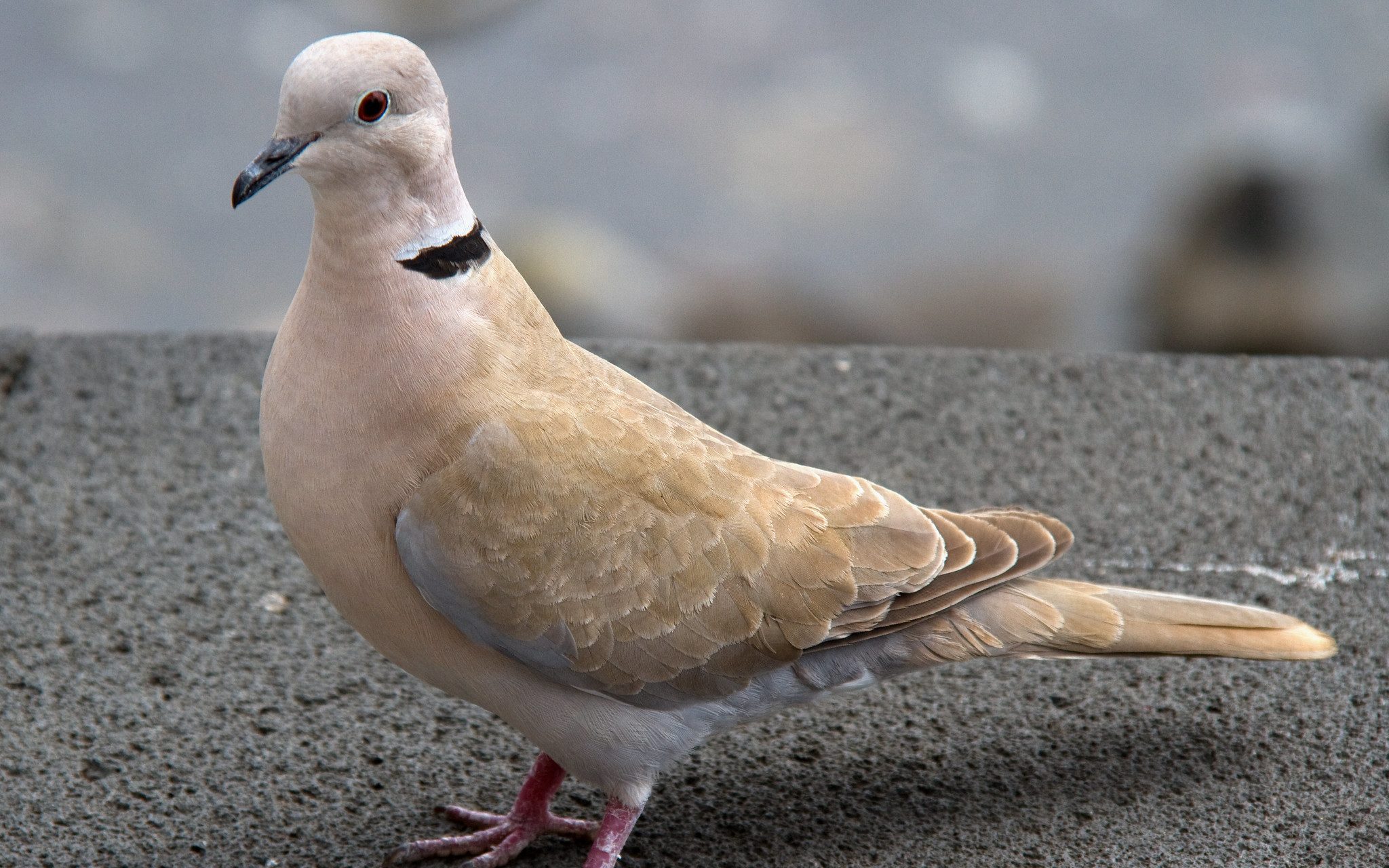
A Eurasian collard dove. © Tony Hisget / Flickr The rock dove (also known as the city pigeon) is, of course, one of the most common and familiar birds on earth. These birds have become established globally through a variety of intentional and unintentional introductions. City pigeon populations are constantly supplemented by domestic birds – often racing pigeons – that never return to their lofts. That’s one of the reasons you see such a variety of colors in rock doves.
The Eurasian collared dove may have spread more rapidly across North America than any bird. The origin of this invasion is believed to have originated with a pet store robbery in the Bahamas that resulted in several birds escaping. (The owner then released the rest he owned). They landed in Florida a few years later, and then colonized much of the United States.
These are the most well-known non-native doves, but there are others. Doves are popular with bird fanciers. The Sibley guide notes small populations of ringed turtle-doves in southern cities. The spotted dove, a southeast Asia species, is now found in California as well as many other places outside its native range.
-
Emus
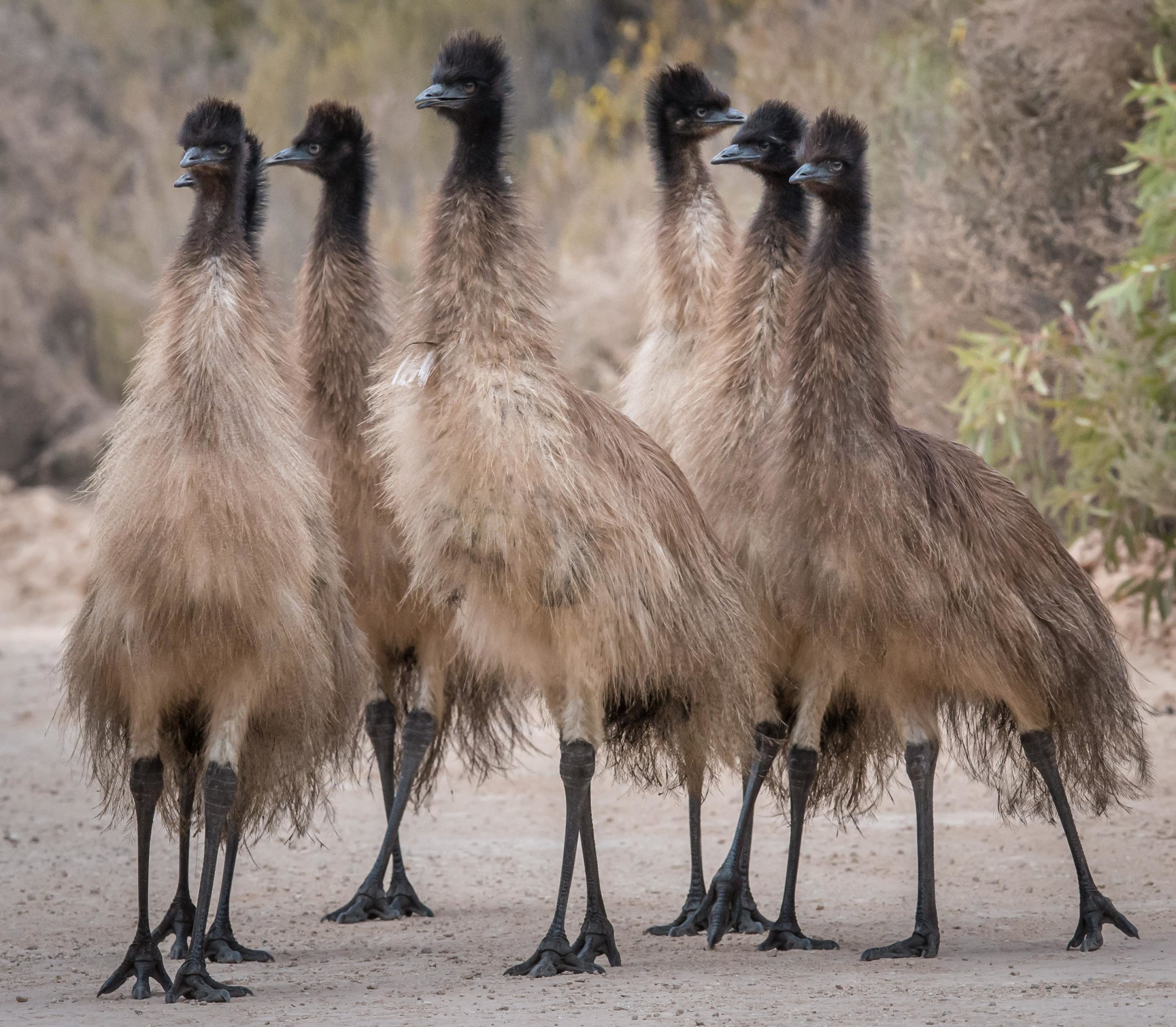
A mob of juvenile emu. © Mark Lethlean Emus are difficult to miss when they’re at large. Reports of free-roaming emus often coincide when the emu ranching industry periodically goes bust. Then people find them on the road (or on jogging paths). While they often lead to media accounts suggesting feral emu invasions, the birds are just too conspicuous and curious to escape capture for long.
There are emu flocks on large Texas game ranches, where they likely live much like wild birds. Most are temporary escapees. One showed up at The Nature Conservancy’s Ball Creek Ranch Preserve in northern Idaho, where it lived until being reunited with its very happy family.
-
Pet Birds

A Red-Crowned Parrot. Photo © Heather Paul / Flickr An unfortunate aspect of exotic pets is that people often tire of them and then set them free, under the mistaken idea that this is kinder to the animal. Often, the animal perishes. But sometimes they establish feral populations, some of which (like Burmese pythons) causing great ecological harm. People release tropical fish and iguanas and even monkeys. And birds. Lots of birds.
There are feral parrots of various species in many of the warmer parts of the United States. See Justine Hausheer’s field guide to feral parrots offers a comprehensive overview (with identification tips) to the species you’re likely to encounter.
One of the more unusual instances of pet birds gone wild involves a bird that may well be in your backyard right now. The house finch is native to a small part of the western United States, but its rapid spread across the country was made possible because it was briefly sold as a pet (marketed as “Hollywood finches”).
Today, we don’t look at house finches as anything notable. They blend in with the other backyard birds, unlike a stray peafowl or feral chicken. For the aware naturalist, the wild today can be a blurry concept, and you never know what you might see. Keep your binoculars ready – and report any weird sightings you find.
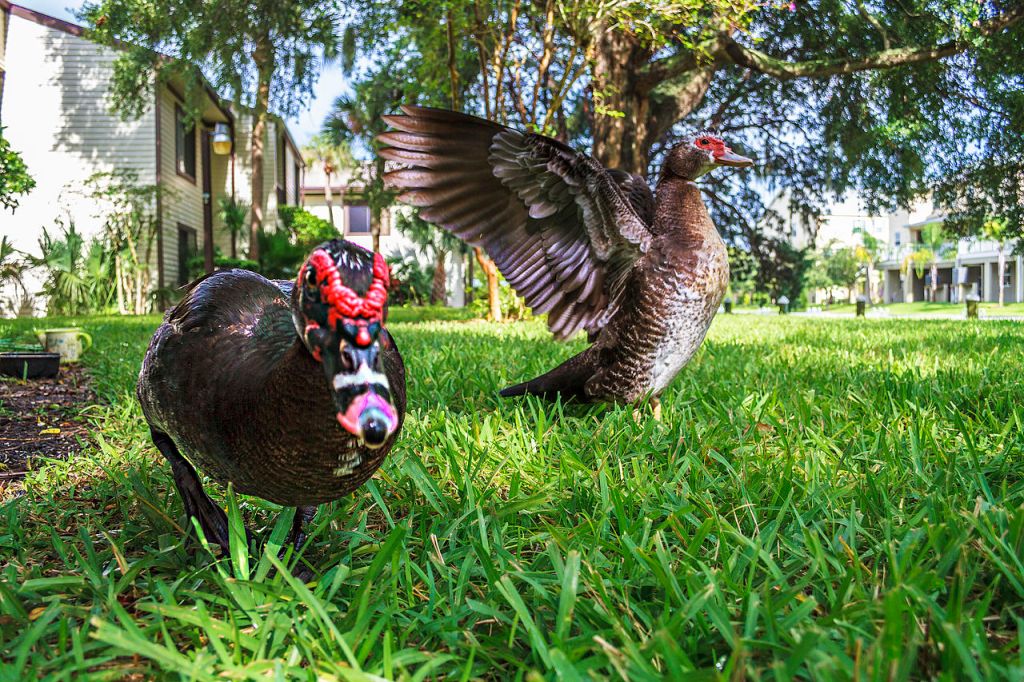



A very interesting and informative presentation !!!! Having moved from Houston, Texas to outside of a little Ozark Mountain city of Crocker, MO. (15 miles from town), see a lot of wildlife living in the ‘country’, so to speak. This will help me to recognize what I would think of as a native species,as a hybrid . Thanks !!!
Ha ha saw an Ostrich feeding in a vacant field. I stopped my vehicle got out, damn male Ostrich got all aggressive. I hopped in the car and took off. Once censusing in a central Illinois woodland, heard a singing bird I did not recognize. After getting done with the censusing I hunted the singer down, Nutmeg mannikin aka Scaly-breasted munia singing his head off in a small clearing in the woods next to an old collapsed hog shed. Pretty sure he did not find a mate there. This was a small woodlot surround for miles around by ag fields. In a rural area. In fact it was the only woodlot in it’s township. Another odd thing, Great Horned Owl, Red Tailed Hawk, and Cooper’s Hawk were all breeding in this woodlot.